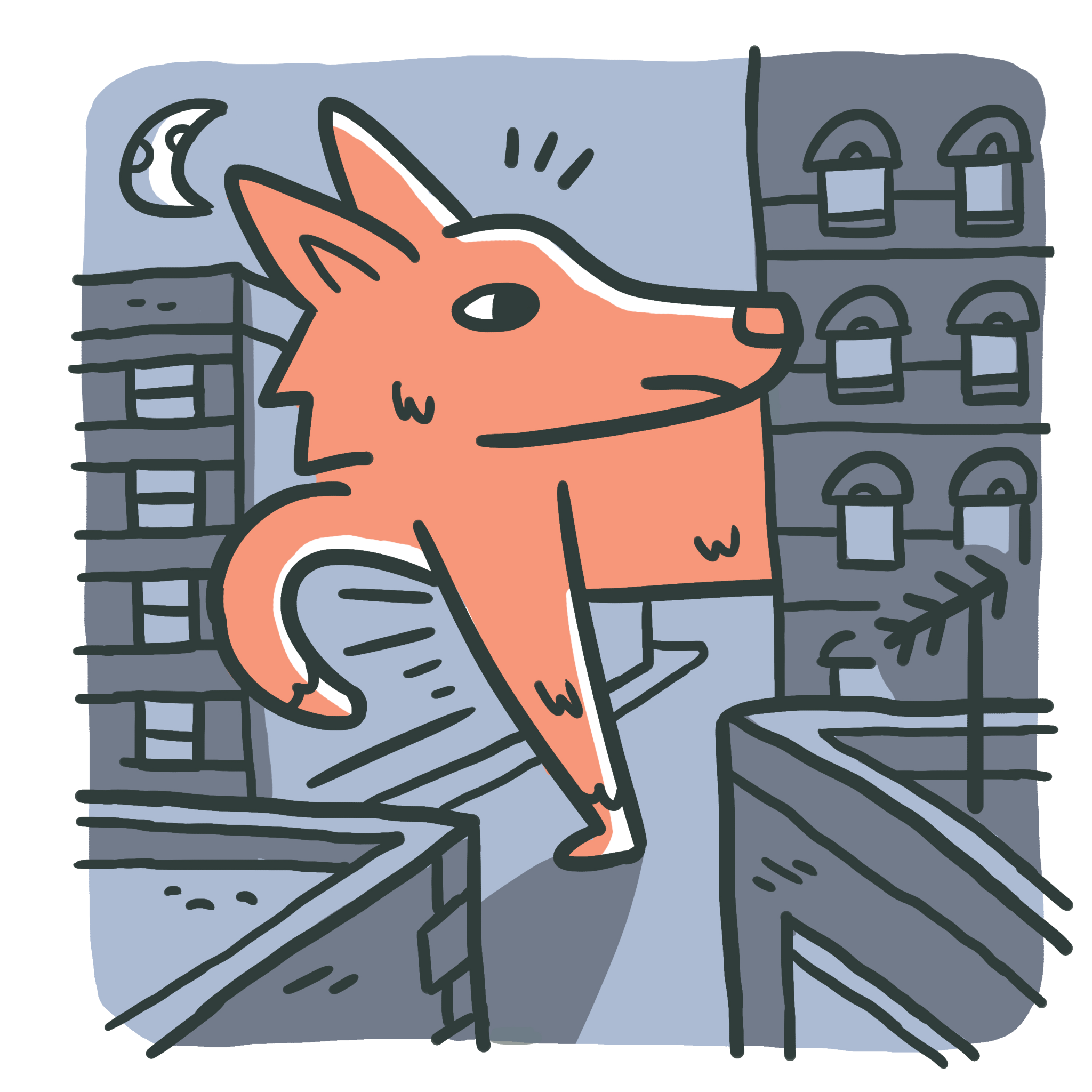In 2007, customers fled from a Quiznos on Adams St. in the Loop when a coyote snuck in through a propped door and sat down in a refrigerated beverage case. The coyote didn’t bother anyone, but he didn’t buy a sandwich either, so about an hour after his entry, Animal Control came to relocate him to a more appropriate location.
Most Chicagoans may not think that their city contains animals more wild than rabbits and squirrels, but what these innocents do not know is that they live firmly entrenched in coyote territory. Since at least the early 1990s, coyotes have been present in the city’s suburbs; soon after their arrival, they started to make their way into the city proper. According to Dr. Stan Gehrt, director of the Urban Coyote Research Program, Illinois experienced a growth in coyote populations in the early 1990s, forcing individual coyotes to find territories in areas that are not typically favored or are usually considered inhospitable; namely, in the city. Lucky for the coyotes, Chicago is abundant with food, allowing the population to thrive and grow.
“It became a favorable place for them to live,” said Gehrt, “but they were initially reluctant. They were forced into the city. They didn’t go voluntarily. Right now, Chicago has its own distinct population of coyotes that grew up in the area. They’re a thriving population. Everyone in Chicago is potentially living with coyotes.”
The Urban Coyote Research Program has tagged over 867 and collared over 440 coyotes since 2000, but they’re not the only ones keeping track of the animals. Civilians can report sightings on coyotemap.com, a website that features a map of locations where people have spotted coyotes, and also aggregates news stories about animals in the area. Coyotemap.com claims that they have “received the most reports of coyotes on the north side from Lake View, Roscoe Village, Albany Park, Lincoln Park, Uptown, and Ravenswood, extending to the near north suburbs of Evanston and Skokie.” The website also reports that people have seen coyotes on the South Side, too, but in far fewer numbers than areas north and west.
It is possible that coyotes make the North Side and the suburbs their home more than the South Side, but the disproportionate number of sightings in the area could partly be due to underreporting. (On this note, Chicago Animal Control did not reply to requests for comment.) However, according to Gehrt, and to other eyewitness reports, these coyote populations are not unique to the North and Northwest Sides. “As you move around the suburbs and north and west and south, there’s a sequence of forest preserves in Cook, DuPage, Will, and Lake Counties,” he said. “[The coyotes] are in a lot of green space areas, and that’s where they’re completely saturated.”
According to coyotemap.com, coyotes have been seen in South Chicago, Pullman, Bronzeville, and University Village. Chicagoans have also spotted coyotes in both Washington and Jackson Parks; however, neither park’s supervisor was able to comment on the presence of coyote populations in the parks. Residents in and near Hyde Park have been spotting coyotes for years, including in Jackson Park, at the South Shore Cultural Center, and even on the UofC campus. A source who asked to be anonymous told the Weekly about her encounter near the Midway Plaisance. “A few years ago walking my dog very early on a summer morning, I saw a group of coyotes—probably five—around the generator for the ice rink. That same summer, I saw another pack running towards Cottage Grove and the park. Again, there were about five running on the Midway at Ellis.”
Much like other animals, what primarily attracts coyotes to certain areas in the city is food. “If the food supply is good, then the female will produce more offspring and keep them in the brood for longer,” Gehrt explained. “People need to realize that regardless of where they live, there’s a potential for coyotes to be living in the same area.” But how can you make it less likely that you’ll run into a coyote on your block?
“Just control access to their food,” Gehrt answered. “If there’s no food available, then coyotes will not go there. It’s in our control.”
The upshot of this advice seems to be that even though coyotes probably don’t have strong opinions about putting ketchup on hot dogs and can’t cheer on the Cubs at Wrigley (the wrong choice, anyway), they’re still Chicagoans, through and through. They’re not going anywhere; we just need to learn to live with them.




If I encounter one or more coyotes on the street, sidewalk, or in the park, what should I do?
Do I need to carry a cane or other instrument for protection while out and about?
Hi Fairelee,
According to the Urban Coyote Research Institute, if you see a coyote, you shouldn’t run away from it. You should make a lot of noise and throw something in its direction (not food, though!) so that it gets scared off. Pepper spray is ineffective against coyotes. If the animal is displaying aggressive behavior, you should make a report to animal control, as this is atypical; same goes for if it’s out during daytime and acting this way.
It is of note that there has never been a report of a coyote attacking a human in Northeastern Illinois.
Hope that this helps!